Brother DCP-365CN – Inkjet All-in-One Review
Brother DCP-365CN – Inkjet All-in-One
We take a look at an inkjet all-in-one with a reasonable £70 asking price.
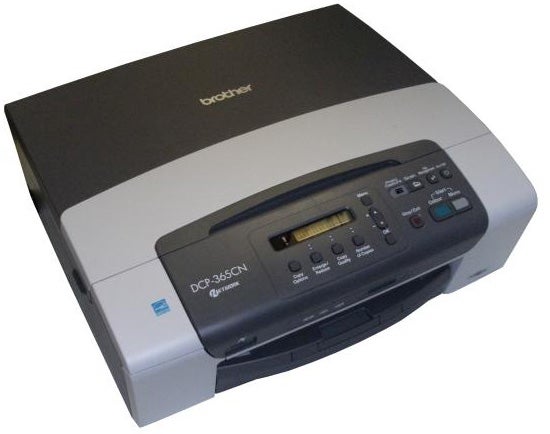
Verdict
Key Specifications
- Review Price: £68.90
Brother’s wide range of lookalike, inkjet all-in-ones starts somewhere near the DCP-365CN. This is a fairly simple machine, with no fax functionality, but still offers print, copy and scan facilities for the home user.
Following the same pattern as so many other Brother devices, the deep, but low, gently sloping case top is divided between an A4 flatbed scanner and a simple control panel with a single-line, 16-character LCD display. This has no backlight but, because it’s mounted near horizontally, any overhead light illuminates it well enough to read easily.
In front of the display are four separate buttons for copy options, enlargement and reduction, copy quality and number of copies. It’s useful to have these quick-access buttons for such commonly needed features. To the right of the main controls are mode keys for photo capture and scanning and buttons to start and stop a copy job.
Set into the front face of the printer is a memory card slot for SD, MemoryStick and xD cards and there’s a PictBridge socket, which doubles up for USB drives.
Below the sockets is a pull-out paper cassette, taking up to 100 sheets of plain paper or 20 photo blanks. You can’t load both at once, though, and if you load up more than one sheet of photo paper, you may have trouble with paper mis-feeds – we did.
At the back are sockets for USB and Ethernet connections; it’s unusual to have network facilities as standard in a machine at this price.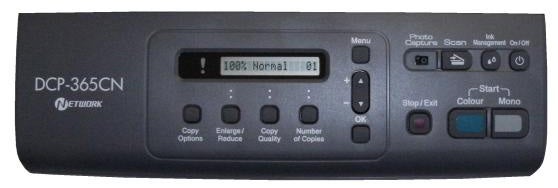
Brother provides its usual MFL-Pro software suite for scanning and OCR, as well as for handling photo capture and there’s also a copy of Nuance’s PaperPort 11, which is a useful addition for file management. Drivers for Windows and OS X are provided as standard, but running a search on the Brother site threw up no support for Linux on this machine.
The four ink cartridges slide into runners behind a cover to the right of the paper tray and are very easy to set. The machine performs a one-off charging cycle when first switched on, prints a test page and is then ready to go.
On the good side, the DCP-365CN prints in colour nearly as fast as it does in black. Against this is that fact that both colour and black are near-equally slow. Brother may claim 33ppm in black and 27ppm in colour, but that’s in draft mode and in normal mode, which most people will use most of the time, you’ll be lucky to see a tenth of that.
Our 5-page, black text print took 1:45, equivalent to a print speed of 2.86ppm. On the longer, 20-page document, the speed rose to 2.97ppm, still pretty slow compared with the specification. The 5-page black text and colour graphics print took 2:03, a speed of 2.44ppm, so this machine isn’t quick, whatever it’s printing.
Copy speeds are little different, with a single-page, A4 colour copy taking 42 seconds and 15 x 10cm photos taking between 2:47 and 3:14, depending on the source of the image.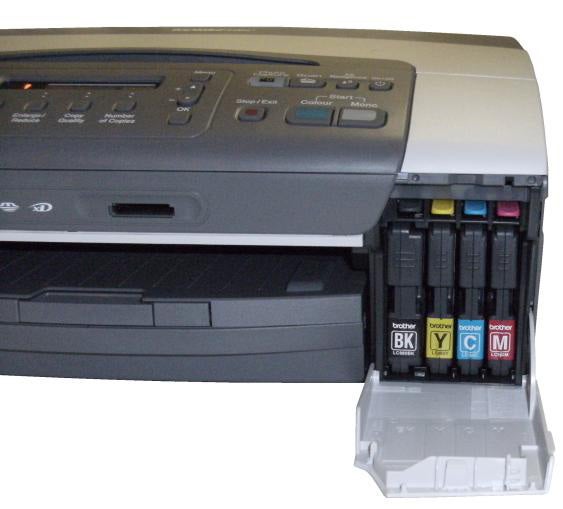
Unlike most all-in-ones which include memory card slots, the DCP-365CN only provides Photo Capture. What this means is that when you plug a card into any of the slots, the device contacts its host PC and gives you the facility to view photos from the card. To print them, they have to be uploaded to the PC and then downloaded to the printer. This is primarily because the machine has no colour LCD for viewing and selecting thumbnails, but it does mean print from a card is a two-stage process.
This is true, too, for photos coming from a USB drive, though with PictBridge you can use the LCD display on your camera for image selection.
Print quality is similar to most Brother inkjets, all of which use very similar engines. Black text is quite clean, though not as densely black as some of its rivals. Text characters also show some feathering, with jagged outlines betraying a flow of ink up the paper fibres.
Colour graphics look a bit washed out, but are smooth and with good registration of black text over colour. A colour photocopy looks even lighter, though is still usable. Colour photos, while not up in the Canon or HP league, are reasonably well reproduced and colours are dense and vivid, though a little darker than they should be.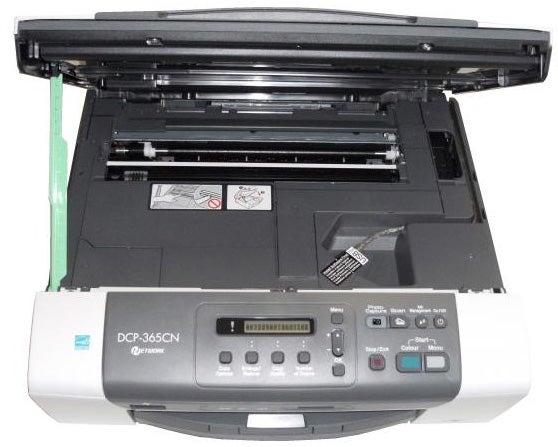
Inkjet cartridges come in one yield, which are 300 pages for black and 260 pages for colour. Although you can buy a triple-colour pack and a quad-ink multipack, we could only find these from sources, such as Dixons and PC World, which made them more expensive than individual cartridges bought from some of the discount suppliers.
Working with the best prices we could find gives a cost per black ISO page of 4.7p, with 12.1p per page for a corresponding colour print. These are not particularly good costs and are high for both black and colour pages.
Verdict
The DCP-365CN is a reasonable, budget all-in-one, which offers above-average print quality, though with a relatively high price per page and long print times. You shouldn’t really expect top speed from a machine costing less than £70, but there are certainly better speeds to be seen elsewhere for similar money.
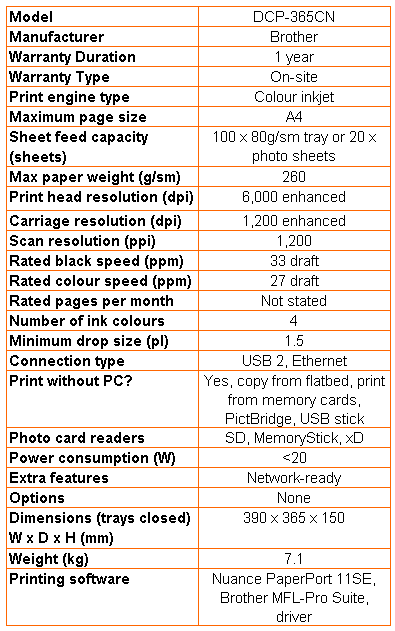
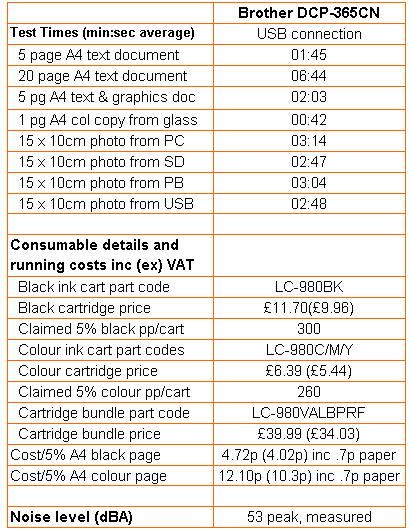
Trusted Score
Score in detail
-
Print Speed 6
-
Features 8
-
Value 7
-
Print Quality 7

